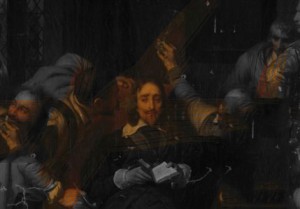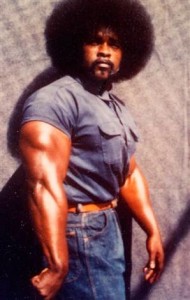X ray, gamma ray, beta ray, UV, infra-red, microwave, radio, spectroscopy, dromology. Big words and little particles that give way, indecipherably, to transform into waveform- or vice versa- when a wave opens up and regurgitates the particle under the microscope. Or the particle passes through something- or boils from its core- or its core does something unusual, like going back in time, disappearing from the laboratory forcing the scientists to sit down to work out where it went. And finding out that went to yesterday. Fat particles that move slowly (red), small particles that move fast (blue), particles that are leftover radiation behaving in different manners, some spinning x direction, some interacting weakly and some particles having no anti particles (bosons). People working hard to simplify stuff and taking damn seriously the hypothetical elements of the enquiry; the winos, the zinos, the sneutrino, the sleptons and charginos.[1] These are not sweets from Willy Wonka or the latest meme to randomly emerge from ether, although they similarly owe their existence to technocracy and the jargon of people who need a word quickly and their subconscious logic takes over. I think Jung would have liked today’s memes and it is interesting to consider their origins, whether they’re a scientist under pressure to describe something, Warcrafters, programmers who play Warcraft (!) or network protesters turning some psychotic cop casually pepper-spraying people into an icon, as he sprays his way through the Getty image archive. He’ll be on a talk show soon,commissioned by conservatives trying to appeal to the upper middle class about protecting their traumatized ephemeral wealth, their shifting pension, their shifting house and their fear of working for nothing until they die.
Time and time again there is this perpetual cycle of feeling defeated by one’s own inability to comprehend the world as much as one would like to, that a defeatism prevails when certain areas are approached, that desires outweigh capabilities- or that a certain mania ensues when those capabilities are analysed. The disparity between what one can do and what one wants to do- and the subsequent retreat into the world of notions and ideas to compensate those shortcomings. You can have these ideas for free, even if they are more valuable that anything else than what can be produced in material form. The author turns artist and then faces the emotional position between destroying something or deconstructing it. Constructivism and crazy hedonism ensue in the consciousness to get started, the stupid idea seeds itself and its positivity is contagious, the value can get left behind or carried away, or do this or do that, so it is good to watch it. Maintenance.
Yoko Ono’s transparent mazes spring to mind, revealing a skeletal form- a thing that needs to be escaped from (FORM)- leaving the participants exposed. Afterwards there was this compulsion to make an X ray maze that revealed the bones of the people walking around inside it, like in an airport or Total Recall but there is too much risk of cancer for the audience, which is already high enough. It would be good, though, and maybe euthanasiacs can sign themselves up to participate, so they can look at the insides of other like minded souls and reflect/ genuflect in the nasty invisible wash of the x ray. One feels tempted to anchor this notion to an image, like Bacon’s Pope or Goya’s Saturn, where flesh falls away, vertically, off the canvas, invisibly ripping through the air and the floor beneath it. The artists intent hitting you like a hammer as they drag you down with them.
Images getting washed- by sunlight, predominantly, and occasionally the odd clean up- or post-art vandal assault. Like after Kempton Bunton’s mother had sprayed Goya’s Duke of Wellington with a bit of Mr Sheen to clean it up before she made him hand it back to the police[2], or like the Sultan of Brunei’s housemaid, when she found that rolled up Monet in the garage behind the wardrobe, thinking it was some old curtains and put a bit of carpet upholsterer on it. Those poor conservators, as if it is not enough preserving these crumbling CANONS they also have to train to deal with the more exotic forms of indemnity, from the mad, to accidents, the idiotic, to farce, to out and out hatred and madness- the psycho-sociopath of the anti-image world (yours truly), armed with excrement or a can of spray paint or an axe- or a can of expandable foam inside one of Henry Moore’s orifices. An image is in a cycle of being perpetually stripped and dolled up with artifice for a multitude of reasons, structurally in a literal sense it is compromised and weakened- metaphysically (and generally in some basic sense) it is supposed to have more meaning, which is an archaic, semi-religious dogma- an aspect we are hopefully slowly shaking off. Some people consider it to be a bride being stripped bare by its mother, or Marsyas being flayed, or someone writing about the Norse tradition of Blood Eagling, ripping the skin off a humans back with the back of their axe so they can break the ribs around the spine, one by one, pulling them outwards and then, finally, pull out the liver.[3] The idea being the victim looking like a bloodied eagle.
There is a ghoulish element that is largely present in this foggy, damp old country and, also, in some of the nations paintings, the collections themselves, and the choices of the subject matter- and I’m not just talking about creepy haunted houses, or country lanes and old folklore but when this island reveals it’s nasty side (and not just politically). We have such a bloody history- both in the sense of receiving and giving- and there seems to be this perpetual denial of it, as if negativity is a thing that has to be supressed. It reveals something about the national psyche and our relation to power and violence, like the current reaction to the class war that is being fuelled in this country by bought politicians serving the interest of money before society, who condescend the people they have profligately stolen off and then insult them- and then carry on taking some more. It might be not be wise to sit on volcanoes or powder kegs, or to provoke a volatile material but people in power don’t seem to learn, as if history is only an artefact and not a lesson to be learnt, which is saved for each miserable generation to experience for themselves (altruism is a dirty word in the market).
When I saw Charles 1st Insulted by Cromwell’s Soldiers by Delaroche, after over 50 years of living in cob-webs, it reminded me of a corpse on a slab- having been assaulted by an archaeological site- the latter bit being quite true in many senses. The painting was subject to shrapnel, rubble, kilos of dust, transit and, more than likely, damp. The subjects are nasty, not just the paintings recent history (being bombed): Charles the arrogant fucker- soon-to-be no longer- contemptuously looking down his nose on his tormentors, who gleefully toast to his demise. It’s like he’s a magnet to horrific violence and his nasty sneer follows us around the room. It followed him to the guillotine and it hasn’t transcended anything, in fact it still seems extremely provocative and deserving that the painting did get the shit kicked out of it by the Luftwaffe. Being a cunt transcends time, the word despot prevails and possibly diminishes their crimes.
Torture the Irish and Scottish> insult and steal off the your own people> get beheaded by them> get depicted as the tyrant you were> get assaulted by nature> get assaulted by fate. I want to know more about this painting; if it was loved by its owner, or why it went where it went. It’s got a similar, nasty backstory to the Goya, like when life, outside of the work, assumes a greater personal meaning, trivialising the sentient stuff in the painting, only for us to then elevate, it again as it has accompanied us on our journey of interpretation. Audience Participation[4].
Spectroscopy is one technique that art shares with astronomy. Dromology is king. The layers of age being sought out as the time it takes for the light to reach the eye determines an approximate age of the thing (the relatively distinct colours from stars- their red shift- contrasting to the paintings’ varying degrees of pallid forms that used to be brighter colours in their heyday). Blue, the small fast oscillating particle/ wave receding and red the slow fat particle/ wave coming towards us…The KECK telescope in Hawaii is such a beautiful thing. The two domes sit in the clouds on top of an active volcano, Mount Kea, in the Pacific, quietly and diligently measuring the ages of stars, systematically working their way through the points in the night sky: the domes agree on a point in space, fix on it and split the light in two, they reconvene at another point, which gives them the mean age of the light- how long it takes for the divided strands of light to reach the volcano…
Gamma pulse- light travelling high frequency waves- sterilising food with radioactive pulses. No mass, just electromagnetic energy. A microscopic bombardment of metallic cobalt radiation, absorbed into the blood, kidneys, bones and liver but also passed out the through one’s shit and piss (it is well travelled). How does energy materialise? Wave deposits? The slow attrition of what appears to be nothing looked at closer, revealing microscopic phenomena. The scientist then looking at everything from the bottom of food chain upwards, to the things that feed of the small stuff, upwards, to the top of the food chain: amongst all that exists amongst the exotic cultures; who eats what, does what and how because of where. A transparent creature living in the cold, feeding off very little and doing very little as a consequence, possibly unaware of the light passing through its non-being and its undeveloped brain, like phytoplankton in Antarctic or Arctic waters or microbial creatures that live in trenches that are deeper than the height of Everest. AMANDA in the Antarctic being the doyenne of such things as it chucks thousands of football sized detectors in the ice, similarly working its way through that kind of carbon isotope time layering ice rod to look for Muons and stuff related to anti-matter- the unknown stuff in the universe that outweighs known stuff by 9 to 1? Is that right? Can you look at objects, or the world, or matter in the universe- and say: there is nine times more unknown stuff than all of this stuff?[5]
Microwaves destabilising ambient matter, something needing to be at x viscosity to be pumped all around the 100,000 miles of veins and arteries at its optimal. Fat being the seat of the soul (in the brain). Thermodynamics/ solar particles. Thermo-stasis creating an equilibrium for electromagnetic energy to pass through, over, around the lump of mass, showering the nerves. Nerves oscillating in a state of disequilibrium is a worrying thought… (epilepsy, spasmosis, cymatics). The agitated wave or where all the random factors of material forms and waveforms assume a visual form. Salt at 100 hz, or a water, olive oil and corn starch mix spread out on a speaker, turned on and left alone to perform a one off performance, where the air pressure, the humidity, the temperature, the frequency, the magnet type and the material affect the performance. Even the simplicity of pouring rice on a drum skin and singing with your mouth against the skin reveals an imprint of the ambient data of the materials. It’s an amazing form of documentation.
|
The Act of the Prosecution of Charles 1st taken from the National Archive. Pertinent, more than ever. An Act of the Commons of England assembled Whereas it is notorious that Charles Steward be now King of |







